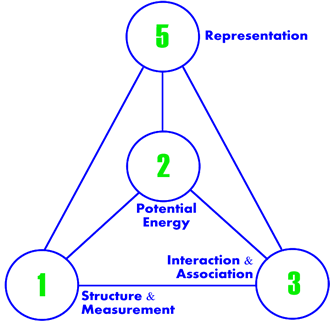| Flucidity | 2007-02-15 14:31 7 comments |
 by Flemming Funch by Flemming FunchA.Sorel pointed me to his new TOE (Theory of Everything), Flucidity. I must admit, I wouldn't mind myself coming up with a simple theory that somehow explains phenomena in a great many fields, but I haven't succeeded. Sorel is not a physicist, but he goes in some detail explaining how his theory covers physics as well as economics, personal success, and just about anything else. Despite a couple of attempts, I just don't get the physics part, but looking around on the net, I notice that he gets a relatively promising welcome in physics forums. But as a life tool, I can certainly evaluate it, and it checks out quite well. It is represented in this little diagram there, with these components:
This approach brings to mind the Law of Attraction, but this is more structured. Let's say there's something you'd like to happen, like, you want to live in a certain type of house. You'd start by making or finding a representation of it, which could be a drawing of it, or a photo, or a magazine. Then you create some structure around it, like, for example, you set up a game for yourself, of going to the kind of neighborhood you'd like to live in once per week, and you set up some rules, which might be completely arbitrary, like that you'll talk with exactly 3 different people in that neighborhood when you go visiting. That sets the stage for interactions, obviously. And all of that creates potential energy, building up some kind of momentum in the direction of your goal. It might bring you closer, and you end up in a new situation, where you might choose a new (better) representation, and go from there, in the same manner. That works, and that's a pretty neat way of structuring it. Picking a representation of what one desires is a well-known tool. Putting a picture of your dream house on your refrigerator door, etc. But putting some structure and some rules around it quickly makes it more real. It has the advantage that one can make it arbitrarily easy, so one doesn't have to get lost in the great difficulty in doing what one wants. One does something more simple around the representation, which creates progress, but which also distracts from worrying about obstacles. The representation and the rules set up a potential. Inevitably one will interact with someone or something in carrying them out, which leads to new opportunities, which only can get one closer to one's aim. So, A+ as a tool for materializing what one wants. Beyond that it makes my head spin if I try to grasp how that applies to physics, or how I can predict anything tangible with it. So, I'll leave it at that for now. |